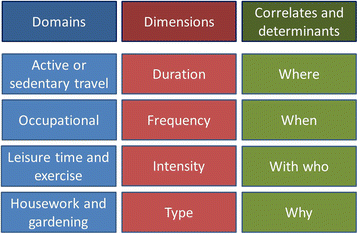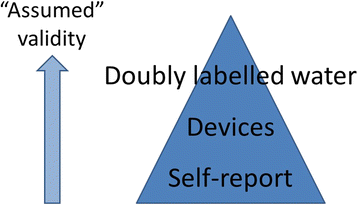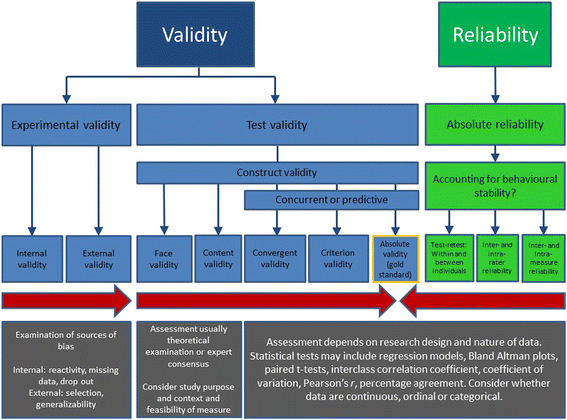Should we reframe how we think about physical activity and sedentary behaviour measurement? Validity and reliability reconsidered
- PMID: 26931142
- PMCID: PMC4772314
- DOI: 10.1186/s12966-016-0351-4
Should we reframe how we think about physical activity and sedentary behaviour measurement? Validity and reliability reconsidered
Abstract
Background: The measurement of physical activity (PA) and sedentary behaviour (SB) is fundamental to health related research, policy, and practice but there are well known challenges to these measurements. Within the academic literature, the terms "validity" and "reliability" are frequently used when discussing PA and SB measurement to reassure the reader that they can trust the evidence.
Discussion: In this paper we argue that a lack of consensus about the best way to define, assess, or utilize the concepts of validity and reliability has led to inconsistencies and confusion within the PA and SB evidence base. Where possible we propose theoretical examples and solutions. Moreover we present an overarching framework (The Edinburgh Framework) which we believe will provide a process or pathway to help researchers and practitioners consider validity and reliability in a standardized way.
Conclusion: Further work is required to identify all necessary and available solutions and generate consensus in our field to develop the Edinburgh Framework into a useful practical resource. We envisage that ultimately the proposed framework will benefit research, practice, policy, and teaching. We welcome critique, rebuttal, comment, and discussion on all ideas presented.
Figures



Comment in
-
Comment on "Should we reframe how we think about physical activity and sedentary behavior measurement? Validity and reliability reconsidered".Int J Behav Nutr Phys Act. 2016 Jun 10;13:66. doi: 10.1186/s12966-016-0392-8. Int J Behav Nutr Phys Act. 2016. PMID: 27287522 Free PMC article.
References
-
- Rowe D, editor. Back to the future? Algorithms and equipment vs. simplicity and common sense in physical activity assessment. 23rd International Sport Science Congress, Daegu, Korea. 2011.
MeSH terms
LinkOut - more resources
Full Text Sources
Other Literature Sources
Medical

